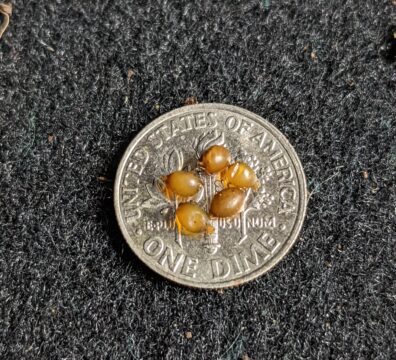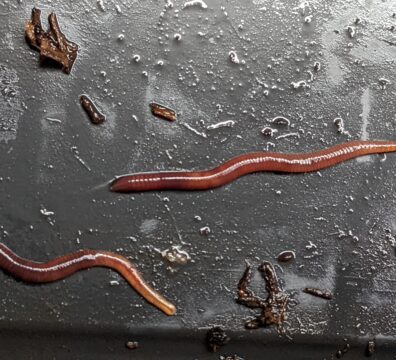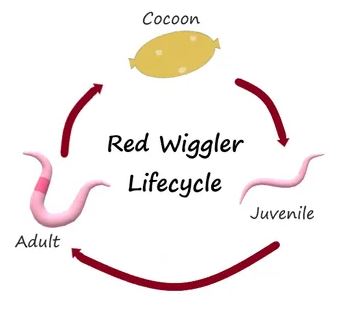Red Wiggler lifecycle
Red Wigglers go by many different names but here we will be referring to Eisenia Fetida and Eisenia Andre when we say Red Wiggler. These guys spend their lives in the upper layer of the soil munching on decaying organic material. Unlike the common earthworm that feeds on soil these guys only use dirt for grit to aid in digestion.
Let’s talk about how these guys live their lives. This will begin with the cocoon. The cocoon is created when 2 adult worms which can be identified by the pink clitellum near the head, get together and mate. Worms are hermaphroditic but still require a mate in order to produce cocoons. On average a worm will produce 1 cocoon per week. This is very dependent on a number of factors like temperature, food, moisture, and density. Once a cocoon is created it has an incubation period of about 3-4 weeks the cocoon turns from a bright yellowish-gold color to a dark brown color. After a few weeks, the baby worms will leave the cocoon. These baby worms are called Wormlets but are more commonly referred to as Wisps. Each cocoon averages 3 wisp but this can vary greatly.


Once the Wisp emerges from the cocoon, it will start feeding and turn from white to red. During this growth stage, they put on weight and grow to their adult size of about 2-3 inches. The more space and food available the bigger Red Wigglers will get. It has been said that they can eat half their body weight in food. Although I am not sure this is true, I can say this. If the conditions in the bin are optimal, worms will eat quicker turning that moldy pumpkin into worm casting in no time. They will go through the bin and eat up everything until adulthood which is around 45-60 days. Once they hit sexual maturity they will begin to develop a clitellum. The clitellum looks like a raised set of pinkish bands up near the head of the worm. This is the reproductive organ of the worm.
Now that the Red Wiggler has reached sexual maturity it will reproduce on average once a month. They will continue to do this for up to 3-5 years in captivity, but longer studies on the life expectancy of a Red Wiggler have not been accomplished.
A few things to remember about Red Wigglers are that they will self-regulate their population based on density and food availability. Additionally, as the density of the worm population increases the size of the adult worms will decrease. This means that even though the worm isn’t 2-3 inches long if it has a clitelum it is an adult and able to mate


Here is what we covered:
Cocoons are created weekly and hold about 3 worms and it takes 3-4 weeks for the Wisps to emerge from the cocoon.
Juveniles are hungry and ready to eat, they will grow to 2-3 inches, and it takes 45-60 days for them to hit sexual maturity.
Adults can be identified by the raised pink bands near their heads, they are hermaphroditic but need a mate to produce cocoons, produce about 1 cocoon a week, and live 3-5 years
